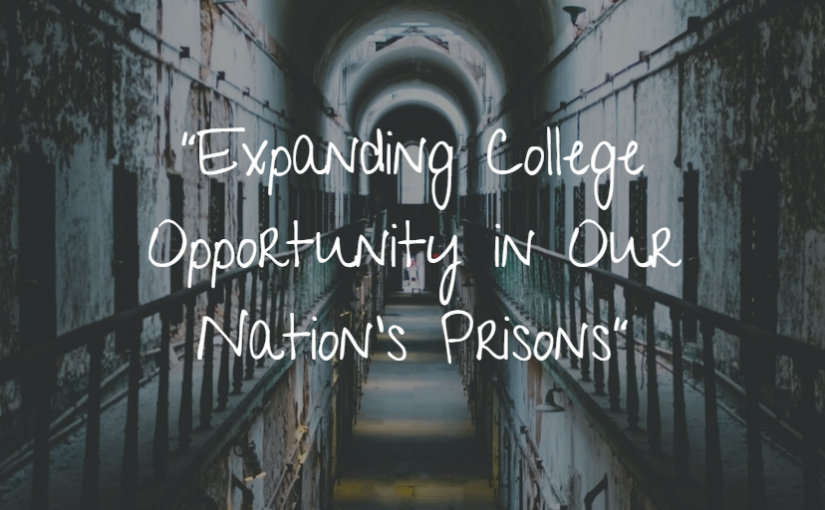For more than five years now, “expanding college opportunity in [one of] our nation’s prisons” has been my part time job, and it’s been my full-time job for the past year, since the JCI Scholars Program partnered with the University of Baltimore to offer courses towards a Bachelor’s degree in Community Studies and Civic Engagement as a part of the US Department of Education’s Second Chance Pell Experimental Sites Initiative.
I visited the University of Michigan-Ann Arbor last week to participate on a panel with this title. I learned a lot from my co-panelists Erin Castro and Fred Patrick, but each of us were asked to prepare answers to the questions below so I thought I’d share those answers here.
If you had to describe the current relationship between higher education and prisons in one phrase, what would it be?
College in prisons
There is an eternal tension in higher education between the liberal arts and practical arts. Prison education programs often face this same tension. Based on your experiences, how has this divide manifested in prison education programs? Are there certain curricula that tend to receive broader support? How has this influenced your own work?
I think the data suggest that even for people who want a vocation, a liberal arts degree is the best investment. I’m partial to the philosophy major, myself: employment prospects and pay are better for the modal philosophy major than for the modal business administration major, because the liberal arts are techniques for problem solving, clear communication, and understanding difficult texts and situations. To achieve that, students need to learn to read hard books and write long papers for demanding professors.
Of course, the liberal arts are also–literally–techniques for freedom and for free people. So they’ve got that going for them, too, which is nice.
The audience today is full of current and future educators that may be considering how they can get involved with a prison education program. As you reflect on your own experiences, are there moments that stand out to you as particularly informative for those in the audience?
I started teaching a philosophy class and ended up running a program. There’s tremendous unmet demand among those 2.3 million incarcerated men and women for a college education. Be patient and persistent, recognizing the work comes before your ego, and find and cultivate collaborators.
We also have a lot of people here interested in research and policies that can shape prison education programs. What are the types of research questions the next generation of researchers should consider?
There’s very good reason–as Erin Castro reminded us during the panel–to look past the recidivism question: “We don’t evaluate a University of Michigan degree based on how likely its graduates are to later become incarcerated.” And while I do think that the recidivism statistics are awesome trump cards for the public policy debate, I would like to see my own program evaluated on other metrics, like student satisfaction, just as programs on the outside are evaluated.
It’s notable that s
If this becomes a partisan issue, I don’t expect it to survive. But I’d like to think it won’t become partisan, that there’s still enough bipartisan support for this because it’s such low-hanging fruit, because the evidence makes it common-sense. If you’re committed to small government, you like prison education. If you’re committed to social justice, you like prison education. What else can you think of that the Koch brothers agree with George Soros about?

 “Low hanging fruit:”
“Low hanging fruit:”
Second Opinions